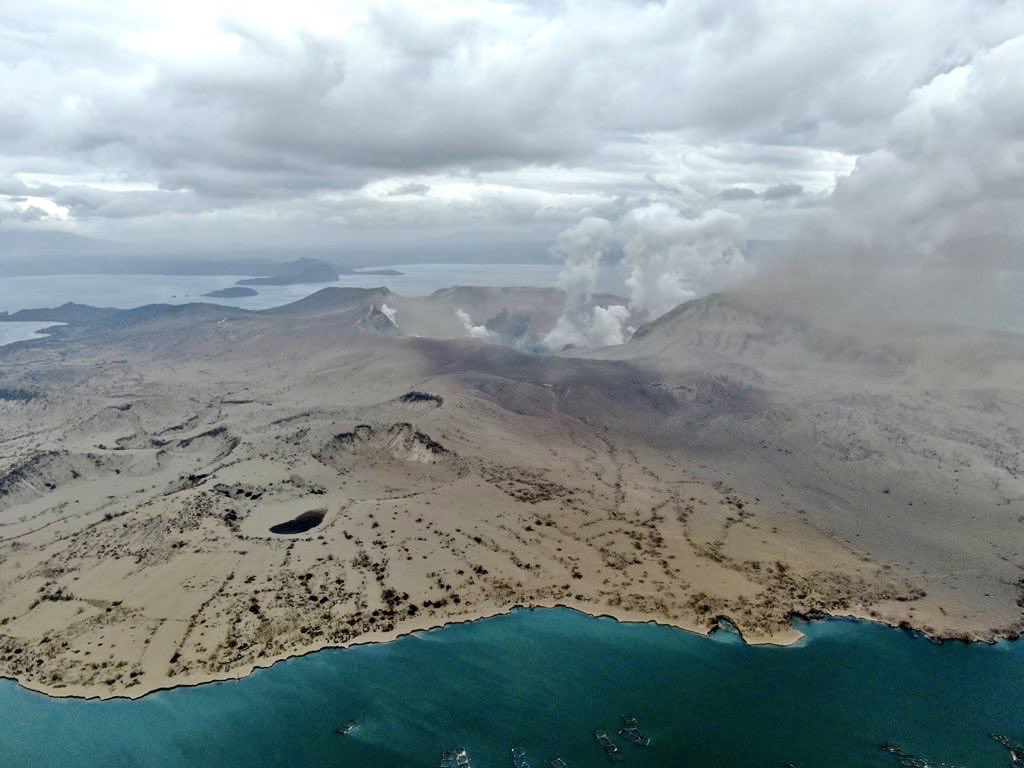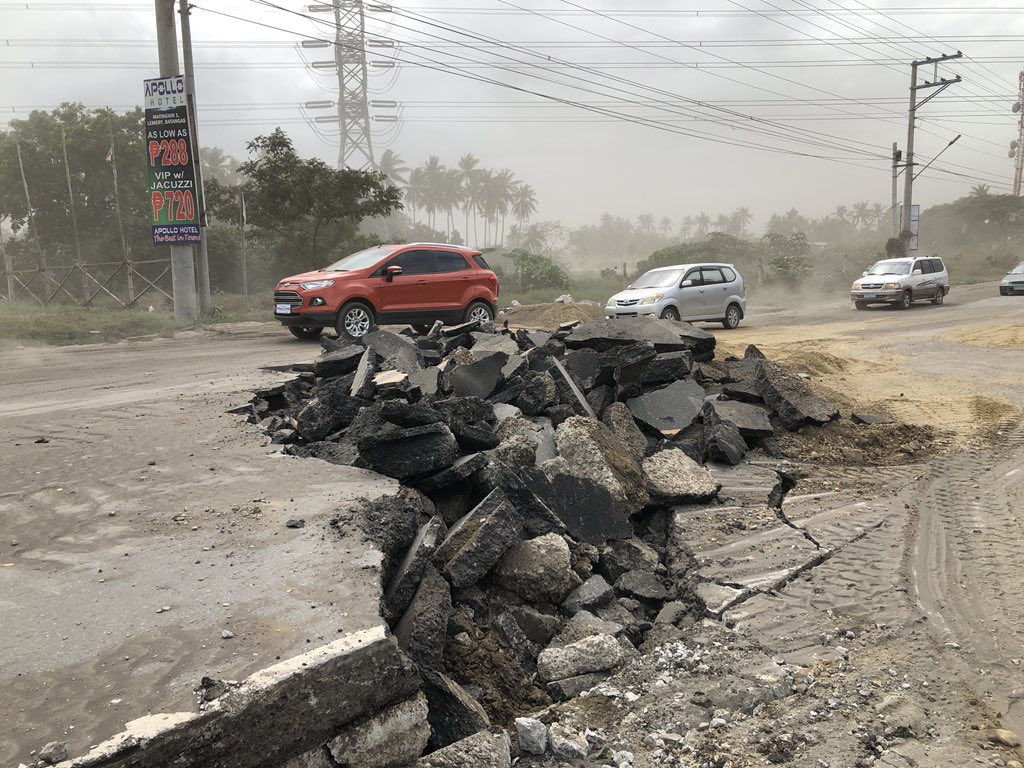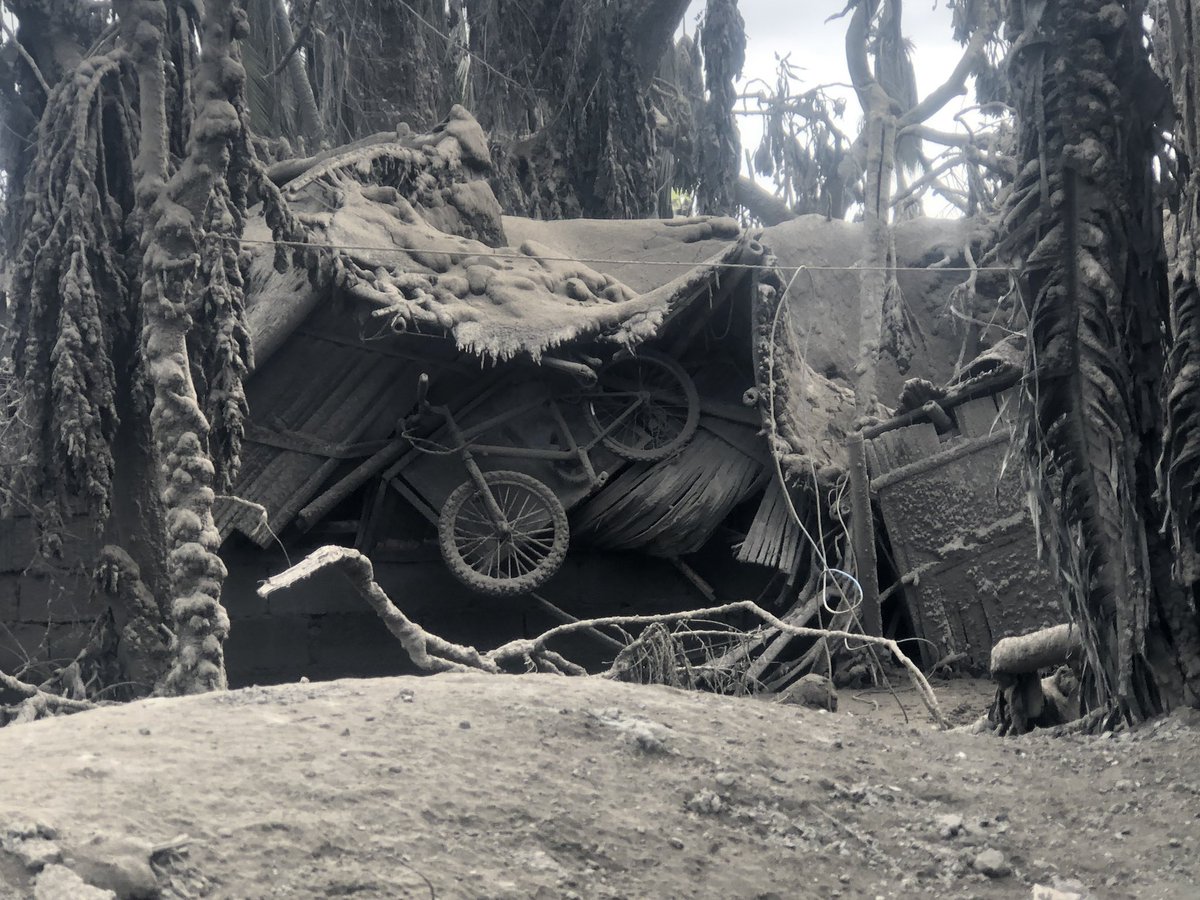
As at 5 pm on 15 January 2020, the Philippine Institute of Volcanology and Seismology (PHIVOLCS) reported that Taal volcano’s eruption is still going on and retained the Alert Level for Taal at 4 (hazardous eruption imminent), where further eruptions are likely to occur in the coming hours or days.
The volcano continues to send dark grey steam-laden volcanic plumes up to 700 metres (m) in height drifting to the southwest of the volcano, and new cracks on the ground have been reported in several locations around the volcano. New observations indicate that the Main Crater Lake and parts of the Pansipit river are drained out, and new vents in the Main Crater and on the northern flank of the volcano have also appeared.

The volcano’s seismic activity continues to be intense with 520 earthquakes recorded since 1 pm on 12 January 2020. 169 of these were felt by the local populations. This suggests that the magma movement could result in further volcanic activity. Sulphur dioxide (SO2) gas is still being emitted from the volcano, but at a lower rate than the day before (1,686 tonnes per day as of 14 January 2020).
PHIVOLCS has advised that residents of Taal Volcano Island, as well as those in high-risk areas (within 14 km of the volcano’s Main Crater and along the Pansipit River Valley) should evacuate.
As at 6 am on 15 January 2020, the National Disaster Risk Reduction Management Council reported that the eruption has so far affected a total of 53,019 people in Batangas and Cavite, and caused significant damage to the roads and power supply networks. The Province of Batangas was declared to be in a “State of Calamity” since 13 January 2020.

Because the eruption is still on-going, PHIVOLCS has issued a warning to the local populations “to guard against the effects of heavy and prolonged ashfall”. Why is it important to heed this warning? It is because ash can affect people and infrastructure in various negative ways.
How Ash Hurts People and Destroys Infrastructure
Volcanic ash is composed of fine particles of glass, crystals or rock fragments that are less than 2 millimetres. It is because the particles containing harmful chemicals are so small that they can quite easily enter the lungs and cause respiratory problems and irritate the eyes and skin.

The International Volcanic Health Hazard Network (IVHHN) recommends staying indoors during such events, and to wear appropriate protection such as face masks and goggles. The most effective face mask in such situations is the N95 mask. During periods of prolonged ashfall, it is advised that the mask be replaced regularly.
Ash can also affect water potability if it contaminates water supplies. Bottled water is the best way to keep safe from contaminated water. Ash can also damage infrastructure, resulting in collapsed buildings and slippery roads. IVHHN recommends that driving at such times be avoided where possible.
For official updates on volcanic activity at Taal volcano, follow PHIVOLCS on Twitter @phivolcs_dost.